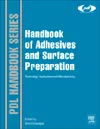Ask Dr. Dave
I see a lot of job advertisements for polyurethane chemists. Why the sudden interest?

Question: I see a lot of job advertisements for polyurethane chemists. Why the sudden interest?
Answer: My long academic and industrial background has been mainly in acrylic and epoxy adhesives. However, in recent years, polyurethane chemists have made great strides to make polyurethanes that are excellent alternatives to the established technologies in adhesives, sealants, and coatings. Although polyurethanes can be formulated to be rigid polymers, their most useful property has always been the ability to provide tough or flexible systems that bond a range of surfaces.
Polyurethanes can be one- or two-component systems. The single-component systems comprise a polyester or polyether polyol that has been end-capped with an isocyanate. The isocyanate reacts with atmospheric or added water to cure the product. This type of polyurethane has become quite popular as a consumer adhesive in recent years. Two-component systems involve mixing an isocyanate with a polyol. By choosing the appropriate raw materials, the viscoelastic properties and chemical or thermal properties can be tailored for the particular application.
Compared to acrylics or epoxies, polyurethanes start out as relatively low-viscosity systems that are easy to apply and have considerable versatility in adding modifiers to alter their properties. Some negatives are associated with these adhesives. Some isocyanates are toxic or are serious irritants. In addition, there have been some technology developments for non-isocyanate polyurethanes. Also, isocyanates can react with impurities such as water to produce carbon dioxide gas (although this can be used as a benefit to produce urethane foams).The use of moisture scavengers can mitigate this problem in adhesives or coatings.
The reason for seeing so many advertisements for polyurethane chemists is almost certainly that companies have pushed alternative chemistries as far as they can go or they see the extreme versatility of polyurethane technology. ASI
Any views or opinions expressed in this column are those of the author and do not represent those of ASI, its staff, Editorial Advisory Board or BNP Media.
Looking for a reprint of this article?
From high-res PDFs to custom plaques, order your copy today!







